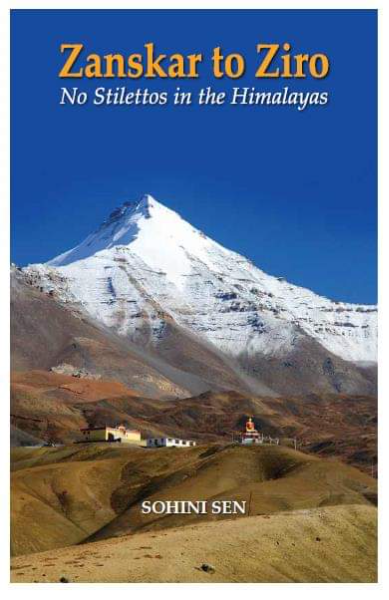Zanskar to Ziro: No Stilettos in the Himalayas

Books › Non-Fiction
Share
Mood & Emotion
Happy
Down to earth
Beautiful
Gentle
No sexual content
Optimistic
Long
Book Purchase Link
Book Description
Zanskar to Ziro: No Stilettos in the Himalayas is a travelogue about two women’s decade-long love affair with one of the youngest mountain ranges in the world: the Himalayas. Their 10-year trail—a length of time that saw infinite changes among the mountains and in the travellers’ lives—covers 10,000 kilometres among the Himalayas alone, and stretches from the remote Zanskar Valley in Ladakh through Himachal Pradesh, Uttarakhand, Nepal, Sikkim, Bengal and Bhutan to Ziro in Arunachal Pradesh.
Travel literature is essentially the impressions of one culture viewing another. Travel literature by women is more than that: it is also about how women cope with ‘being women’ in an unfamiliar land.
And it is this ‘female gaze’ that sets Zanskar to Ziro: No Stilettos in the Himalayas apart from, say, an Into Thin Air, a first-person account of the disastrous Everest expeditions of 1996. For, as women, the travellers have not felt driven by the very masculine urge to discover, to conquer, or to ‘experience life at its extremes’ and then return to their urban lives ready to deliver an expert’s view.
Instead, the two women have ambled along the mountain ranges and their people, with an eye for the aesthetic as well as the curious, a heart for the exotic, and an ear for the local lore or even a recipe from a village woman. Yes, being women, they had an easy access into warm kitchens and warmer feminine hearts, something a male visitor would be denied.
That is why Zanskar to Ziro: No Stilettos in the Himalayas emerges as an infusion of luxuriant landscapes and rich history, a successful evocation of a sense of place. The book is also enriched by echoes and allusions from all that the ladies have read, and—thanks to the author’s interest in photography—high-quality visuals.
The travellers are also characters in the travelogue, as much a part of the narrative as the local people they meet. The acceptance that comes from having lived half of one’s life has allowed them to wade across difficulties with a sense of humour—often self-deprecating—that twinkles through the book.
Every journey teaches one something. These Himalayan journeys have also been journeys within. The lady travellers may not have discovered a new place, one that lay hidden among the mountains. Yet, they have discovered a new place, one that lay hidden in them: covered in the detritus of social norms; the dos and don’ts from their upbringing; the never-ending pursuit of goals. There, in that secret, silent glen, they learned to listen to their souls, and were free.
